The photographs in this chapter show how non-human things, often quite ordinary, everyday objects, can be made extraordinary by being photographed. As the title suggests, the stuff of daily life ostensibly counts as the subject, the "something" of the pictures. But because we may ordinarily pass these objects by, or keep them at the periphery of our vision, we may not automatically give them credence as visual objects within art's lexicon. These photographs retain the thing-ness of ehat they describe, but their subjects are altered conceptually because of the way they have been represented. Through photography, quotidian subject matter is given a visual charge and imaginative possibility beyond its everyday function.
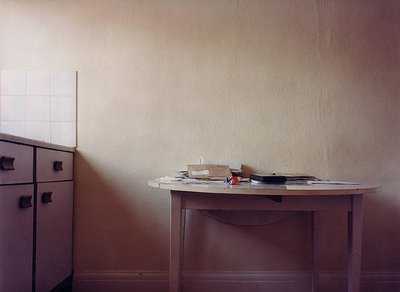
Kitchen Table (from the Dad’s Office series)
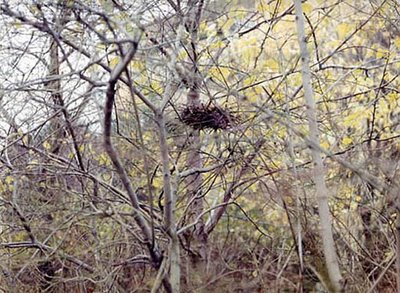
Bird's Nest
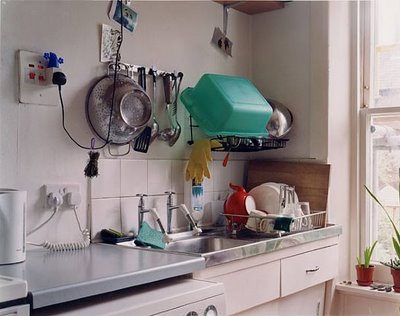
Washing up 16 March 2000, 1:30 pm 2nd photograph of the day. Breakfast crumpets and tea (more with cottage cheese and honey, Ruth’s with Marmite) with Jose and Claudio (who I think washed up)
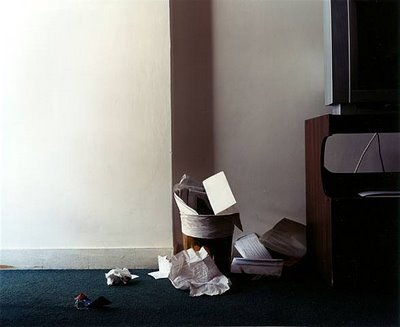
Wastepaper Basket - Mayflower Hotel, Beruit 2003
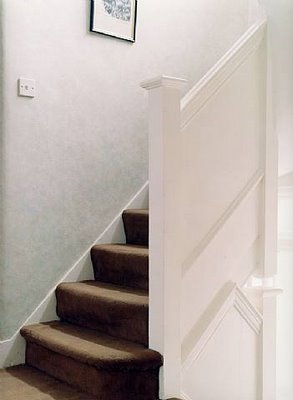
Shannon Family Stairs (from Rachel’s Book)
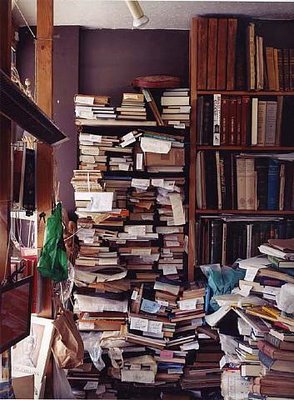
Bookshelves (Archive Bookshop)
Nigel Shafran's work is characterized by the quiet observation of everyday life. His chosen subject matter is deliberately low-key and often domestic in nature: doing the dishes, his Dad's office, charity shops, flea markets. And yet, his work extracts from this something profound and consistently beautiful, the sense of a natural order in ordinary things, or, as Shafran puts it, "an acceptance of how things are."
Questions:
- Cotton wrote: "These photographs retain the thing-ness of ehat they describe, but their subjects are altered conceptually because of the way they have been represented." How do you think this idea applies to Nigel Shafran's photography?
- How do you think Shafran's work expresses "an acceptance of how things are?"
- What does the quality of light bring to Shafran's work?

3 comments:
Love the composition of the trash can, and the pile of books and papers. I appreciate the study of ordinary objects because I often am struck by how a particular book on my table will catch light or how the fake plalnts on my balcony move in the wind. I see all of that, and the big problem I can see is that looking at 30 of these in a gallery might get very redundant.
While I realise that the chosen subject matter is "deliberately low-key" and "domestic" I fail to see how these images have been made extrodinary. It's just my preference, but I don't like these all that much.
The play of light on the subjects is what really makes the photos for me. As in photographing for architectural purposes, at least in my limited experience, the shadows that your draw out of architecture is important in showing to others how the work is carefully designed. Dramatic shadows can make someone see forms in the composition they never thought about. The idea of taking these idea to everyday scenes is a clever approach to a deapan style idea that seems to get beaten to death. I'm sick of seeing people take photos of their dog or a streetlamp and think they're original.
Post a Comment